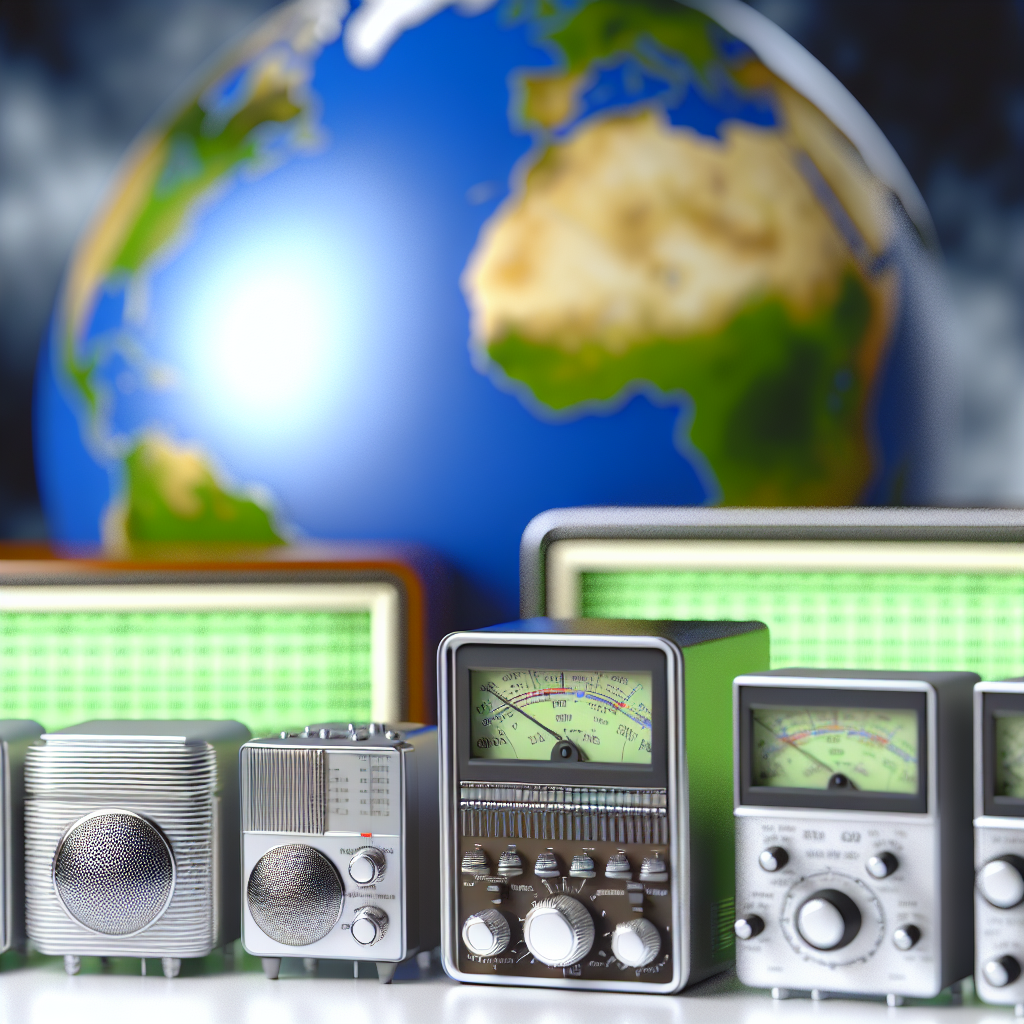Shortwave radio continues to captivate enthusiasts worldwide with its unique ability to reach across borders and cultures. This article delves into the key aspects of shortwave listening, exploring the radio frequency bands, propagation methods, antenna setups, and the enduring hobby of global radio exploration.
Understanding Shortwave and HF Radio Bands
Shortwave radio, encompassing HF (High Frequency) bands, operates between 3 MHz and 30 MHz. This spectrum has a rich history, initially exploited for maritime communication and later evolving into a vital medium for global broadcasts, amateur radio, and emergency communications. The capability of shortwave to propagate over vast distances, aided by ionospheric reflection, has made it instrumental in connecting remote areas, especially during crises. Notable devices such as the Tecsun PL-880 and Sony ICF-SW7600 exemplify the evolution in portable analog and digital receivers, allowing enthusiasts to explore international news, music, and services like military broadcasts, all while engaging in DXing activities.
The Importance of Radio Spectrum and Frequency Allocation
The allocation of radio frequency bands is vital for both commercial and amateur radio operations. Managed by national authorities, the frequency spectrum is also globally coordinated through international regulations established by organizations such as the International Telecommunication Union (ITU). These regulations ensure the efficient use of frequencies across various domains, from broadcasting to emergency communications. Amateur radio operators, accessing designated ham radio frequencies within the HF range, play a significant role in global communications, often using modes like SSB and CW. This structured allocation mitigates interference, promotes international collaboration, and fosters a robust radio hobby culture, emphasized in the importance of disaster preparedness and rural communication strategies.
Radio Propagation: Reaching Across Continents
Shortwave radio leverages skywave propagation to extend its reach across continents, allowing signals to bounce off the ionosphere. This phenomenon is influenced by various factors: solar cycles affect ionospheric conditions, altering signal quality. For instance, during periods of high solar activity, signals can travel further and penetrate deeper into the atmosphere. The time of day also plays a critical role; signals are often more effective at night due to lower absorption levels in the ionosphere. Additionally, seasons impact propagation, as changing atmospheric conditions can enhance or hinder signal transmission. Understanding these elements is crucial for DXing enthusiasts and emergency communication, maximizing global reach during critical times.
Antenna Tuning and Signal Reception Techniques
Antenna tuning is crucial for maximizing signal reception in shortwave and HF radio. By ensuring impedance matching between the antenna and the radio, listeners can reduce signal loss and enhance clarity. Common antenna types include dipoles, verticals, and long wires, each adaptable for varied configurations based on available space and listening needs. For effective tuning, users often employ antenna analyzers to determine resonant frequencies and make adjustments as necessary. Antennas such as the portable dipole or loop antennas are advantageous for travelers, while dedicated ham radio setups may utilize longer, fixed antennas for optimized performance in DXing.
The Thriving Hobby of Shortwave Listening
The vibrant community of shortwave listening enthusiasts thrives on diverse interests, ranging from international news broadcasts to hard-to-receive distant signals, known as DXing. Hobbyists often engage in lively exchanges about their experiences with various portable shortwave devices. Popular models like the **Grundig Radio**, **Tecsun PL-880**, and **Sony ICF-SW7600** blend nostalgia with modern technology, catering to both analog enthusiasts and fans of digital shortwave receivers, including **SDR shortwave** options. Many collectors seek vintage shortwave radios for their unique aesthetics and listening qualities, while others prioritize emergency communication capabilities, making travel radio gear a must-have for survival and rural communication enthusiasts.
Looking Back
Shortwave radio, despite technological advancements, remains a vital tool for communication enthusiasts and survivalists. Its global reach and adaptability make it an enduring facet of radio technology, serving various purposes from emergency communications to international broadcasts.

Leave a Reply
You must be logged in to post a comment.